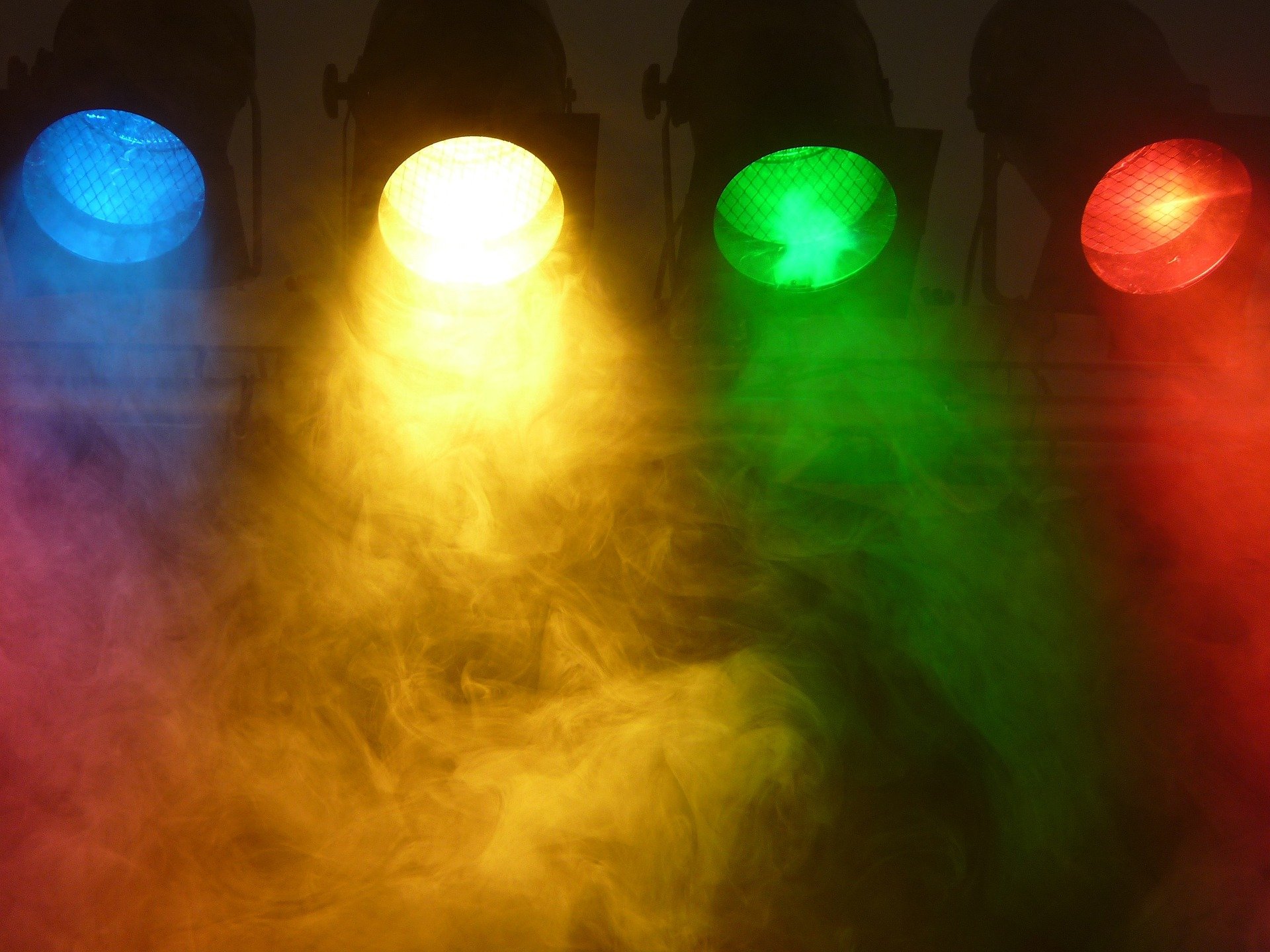
Simple Guide to Fog Fluid
Dispelling the myth
The first thing I'd like to do is dispel the myth that using any fluid other than the brand of your machine will kill your machine. That's "marketing", not factual in every case that I've seen. Every brand of fog fluid on the market that I've tried, (and I've tried over 40 brands) are basically the same. They are the same in the fact that they are made of almost the same mixture and share almost the same purity.
I've heard the concern about other fluid damaging the machine more from "Martin" and "High End Systems" fog machine owners than any other brand. These guys do a great job of "Marketing". Truth be known, I've tested several fog fluids that ranked better than both of these.
The biggest difference in the 40+ brands of fluid that I have tested over the past 20 years was not the chemical make up. It was the purity. Purity is the hardest attribute to achieve in fog fluid. It is measured in "Parts Per Million". Although Martin and High End Systems brand of fog fluid is in the top 5 of brands I tested for purity, it was not in the top spot. In fact it has not tested the same every year over the past 20 years. That leads me to believe that they may not make it themselves. They may be buying fluid from a manufacturer that makes fluid for a lot of brands and labeling it for themselves.
If you were to put an accurate and true warning label on fog machines, it would read something like this... "Use the purest fog fluid you can find in order to achieve a long life from this fog machine".
Purity
Purity is important because most clogs in fog machine heaters are caused by mineral impurities in the water that is blended in the fluid. The chemicals usually come in an acceptable state of purity and my tests show that the chemicals haven't varied much in the past 20 years. Tap water is a definite no-no for fog fluid. Unfortunately, some makers of fog fluid try their best to purify the water they use, but they lack the testing equipment necessary to know if they really succeeded. I've seen some fog fluid manufacturers even resort to buying purified water to blend with, but the purchased water was not as purified as advertised. We keep our fog fluid impurities under 1.5 parts per million and have done a good job of staying under that figure for the past 30 years. Remember, purity is the most critical factor for the life of your fog machine.
Does the fluid match the machine?
In the 80's, when the fog business was fairly new and growing rapidly, I saw a lot variances in fog machines. It was not unusual to see 100 degrees difference in the heating temperatures of two different machines. In those days it really was important to find a fluid that came close to matching the characteristics of your machine. The goal is to have a fluid with a vapor point close to the operating temperature of the heat core in your fogger. That problem is not near as prevalent today as it was back then, but I still see a little difference in machines occasionally. Here's what to look for. If your fog comes out quick and thin and doesn't hang long, you might want a more viscous fluid that will spend more time in the heat exchanger and vaporize better. If your fog is coming out too thick and slow, it may be spending too much time in your heat exchanger (which may lead to early clogs) and you should try a less viscous fluid. You can usually add a little distilled water to any fog fluid to thin it out. Remember, never add tap water!
Making your fogger produce haze
If you want a very light Haze, you can dilute your fog fluid with distilled water until you get the grade of haze desired. When you achieve a light haze, you may not see much fog coming out of the machine, but the air will be full of tiny particles that your lights will be seen shining through. Don't be surprised if you have to activate your fogger more often than usual. That's how it works with haze.
Scents
In the 30 years that I have been working with fog machines, I have seen 1000 times as many clogs in machines that never had a drop of scent added to the fog as I have machines that used scent. It is my opinion (based on 30 years working with fog machines and fluid) that the popular scents sold most often (strawberry, vanilla, tropical...) do not cause any more clogs than unscented fluids. If you take care of your machine and protect your stored fluids, you should be fine. I have seen many clogs in night club foggers caused by large amounts of dust gathering in the tank and jugs of fluid that have been left open for long periods of time.
Cleaning your machine
A clogged fog machine is trash. There is no reasonable means of removing the burnt clog. To keep it from creating a build up of impurities, I suggest running a half a cup of UNCLOGIT through it after every 40 hours of operation or no longer than 3 months. This will help prevent clogs from forming. After running the UNCLOGIT through it, you should run a little regular fog fluid through it to provide lubrication for the pump.

